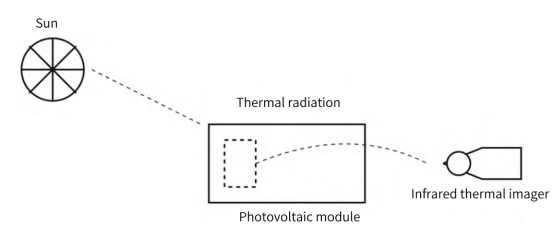
Quantum Efficiency Tester
PL/EL Integrated System
PV-Reflectumeter
3D Confocal Microscope
In-Line Four Point Probe Tester
Four Point Probe Tester
In-Line Thin Film Thickness Tester
Raman Spectrometer
FTIR Spectrometer
Spectrophotometer
Automatic Spectroscopic Ellipsometer
Contact Resistance Tester
Ultra depth of field 3D microscope
Auto Visual Tester
VMM PV Vision Measuring Machine
Solar Cell Horizontal Tensile Tester
Steady State Solar Simulator for Solar Cell
Solar Cell UV Aging Test Chamber
Solar Cell Comprehensive Tensile Tester
Visual Inspection Tester
Wet Leakage Current Tester
PV Module EL Tester
PV Module UV Preconditioning Chamber
Steady State Solar Simulator for PV Module
Current Continuous Monitor
Potential Induced Degradation Test
Bypass Diode Tester
LeTID Test System
Reverse Current Overload Tester
Impulse Voltage Tester
Hipot Insulation Tester
Ground Continuity Tester
Hipot Insulation Ground Tester
Damp Heat Test Chamber
Humidity Freeze Test
Thermal Cycle Test Chamber
Dynamic Mechanical Load Tester
Static Mechanical Load Tester
Hail Impact Tester
Robustness of Termination Tester
Module Breakage Tester
Cut Susceptibility Tester
Peel Shear Strength Tester
Universal Testing Machine (Single-arm)
Universal Testing Machine (Double-arm)
Glass Transmittance Tester
Acetic Acid Test Chamber
EVA Degree of Crosslinking Test System
Junction Box Comprehensive Tester
Drop ball tester
Semi-automatic scanning four-probe tester
Stylus Profilometer
Maximum Power Point Tracker
Perovskite Glass Transmittance Tester
Perovskite P1 Laser Scribing Multifunctional Testing Machine
Perovskite Online PL Tester
Perovskite Online Sheet Resistance Tester
Online Perovskite Film Thickness Tester
Perovskite Process Inspection Workstation
Portable IV Curve Tester
Portable EL Tester
Portable Thermal Imaging Tester
Solar Module Multi-Channel Testing System
PV Inverter Power Quality Tester
Drone EL Tester
IV Tester
IVEL Cell Sorting Machine
Identification and Treatment of Hot Spot Phenomena in Photovoltaic Power Station Components
Date : 2025-08-08Views : 15
Overview of Hot Spot Phenomena
Mechanism of Hot Spot Formation: Hot spots are phenomena caused by abnormal temperature rises in localized areas of photovoltaic components, usually triggered by shading, pollutant deposits, manufacturing defects (such as poor welding or microcracks in the cells), or current mismatches. The abnormal areas cannot generate power normally and instead become loads, causing temperatures to rise sharply and creating a vicious cycle.
Types and characteristics of hot spots
Transient hot spots: Regular high-temperature areas with clear boundaries, accompanied by a sudden drop in power generation.
Contamination-type hot spots: Irregular block-shaped temperature anomalies that gradually worsen as contaminants accumulate.
Internal defect hot spots: Small in area but with significant temperature rise, such as poor welding or cell cracks.
Current mismatch hot spots: Dynamic changes, with temperature distribution changing periodically according to operating conditions.
The impact of hot spots: Hot spots accelerate material aging, reduce photovoltaic conversion efficiency, and in severe cases can cause permanent damage to components, threatening the operational safety of power plants.
Hot spot identification technology

Schematic diagram of infrared thermal imaging measurement principle
Infrared thermal imaging technology: Based on the relationship between the surface temperature of an object and its radiation characteristics, infrared detectors capture temperature distributions and combine environmental parameter compensation mechanisms to improve measurement accuracy.

Heat Spot Feature Extraction Flowchart
Feature extraction method: Use grayscale co-occurrence matrices, optical flow equations, etc. to extract the texture and dynamic evolution characteristics of heat spots, and construct multi-dimensional feature vectors (such as maximum temperature, average temperature, shape factor, etc.).

Deep Learning Model Architecture for Hotspot Detection
Input Layer: Infrared thermal images.
Feature Extraction Layer: Convolution layers, pooling layers (possibly incorporating attention mechanisms).
Output Layer: Dual-task output for classification (hotspot type) and localization (bounding box regression).
Deep Learning Model: Utilizes an improved convolutional neural network combined with transfer learning and attention mechanisms to achieve precise classification and localization of hotspots, with an identification accuracy rate exceeding 95%.
Hot Spot Treatment Technology
Tiered Treatment Plan:
Mild hot spots (temperature anomaly < 20°C): Surface cleaning to remove contaminants.
Moderate hot spots (20–40°C): Replace bypass diodes or repair local defects.
Severe hot spots (> 40°C): Replace the entire module after assessment.
Process Flow: Includes safety procedures (e.g., power disconnection, discharge), robotic cleaning, diode replacement, local repairs, etc., to ensure processing quality and traceability.

Hot Spot Treatment Effect Evaluation System
Effect Evaluation: Evaluated from three dimensions—short-term performance, environmental adaptability, and long-term reliability—data shows that the power generation efficiency of treated components has increased by 5% to 12%, with a payback period of 1 to 2 years.
Using infrared thermal imaging technology and deep learning algorithms, the system achieves intelligent identification and precise localization of hot spots. Based on a tiered treatment plan (such as cleaning, localized repairs, or component replacement), it significantly improves the performance recovery rate of components (with power generation efficiency increasing by 8% to 12%). The established evaluation system validates the effectiveness of the treatment technology, providing a scientific basis for the operation and maintenance of photovoltaic power plants.
Millennial Hot Spot Durability Tester

The Millennial Hot Spot Durability Tester is a precision testing device specifically designed for photovoltaic modules. This device complies with the hot spot durability testing requirements specified in the IEC 61215 standard (MQT19). It accurately detects hot spot effects caused by foreign object obstruction, internal cell defects, or manufacturing defects in photovoltaic modules. It is used for evaluating the hot spot durability of solar cell modules under localized abnormal operating conditions, thereby assisting manufacturers in optimizing module design and enhancing product reliability and safety.

































































